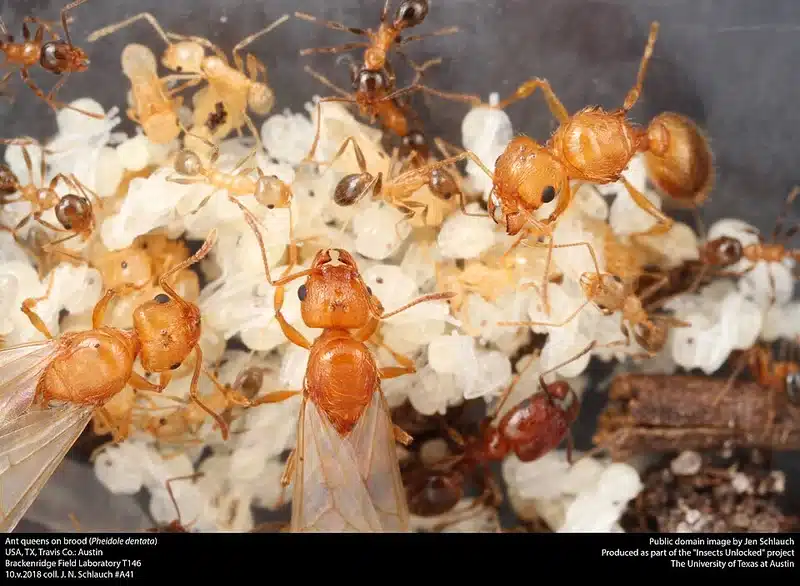Ants may seem tireless, but ants do sleep. I’m a licensed technician in Alexandria since 2015, and I’ve studied ant behavior inside homes and yards. Ants live in organized colonies where rest and work are carefully timed. Over the years, I’ve seen all sorts of sleep habits in ant colonies.
The Biology of Ant Sleep
Insects need rest to stay sharp. Sleeping ants hold very still and show a much lower level of brain activity.
Research on Ant Sleep Patterns
According to a PubMed study, sleep in insects is a state of reduced responsiveness. Using brain activity recorders, researchers monitored brain activity in soldier ants and saw a decline in brain wave fluctuations during deep sleep.
In contrast, during wakeful periods, ants display a higher level of brain activity. This deep sleep phase features mandible and antennae activity and rapid antennal twitches akin to rapid eye movement. Some tests even saw ants slumber for eight minutes when undisturbed.
Ant Sleep Cycles and Polyphasic Rest
Ants generally rely on polyphasic sleep. In contrast to humans who sleep in one long block, ants take many short naps throughout the day.
Fire Ant Sleep Study Results
A journal of insect study of fire ant sleep cycle found that the average worker ant takes approximately 250 one-minute naps each day, each lasting just over a minute. These short power naps add up to about 4 hours and 48 minutes of sleep per 24-hour period, or 288 minutes of sleep per day.
In contrast, queen ants enjoy longer and deeper rest, napping around 90 times a day, each about 6 minutes, for an average of nine hours a day.
Key Sleep Facts by Caste
- Worker ant naps: 250 one-minute naps per day
- Nap length: one-minute to two minutes
- Total hours of sleep: 4 hours and 48 minutes
- Queen ants: about 90 naps, averaging nine hours of sleep
This polyphasic approach keeps tasks staffed throughout the colony while 80 percent of workers stay active.
Circadian Rhythms and Social Sleep
Many species of ants have an internal clock for a 24-hour period. Some show a wake-sleep cycle every 12 hours when isolated.
Circadian Rhythm Research in Ants
Research conducted in PLOS One shows Camponotus rufipes foragers forage for food mainly at night, while nurse ants skip their solo sleep pattern to tend brood. Ants also communicate with pheromones to sync rest shifts in irregular intervals, allowing ants the ability to take turns resting.
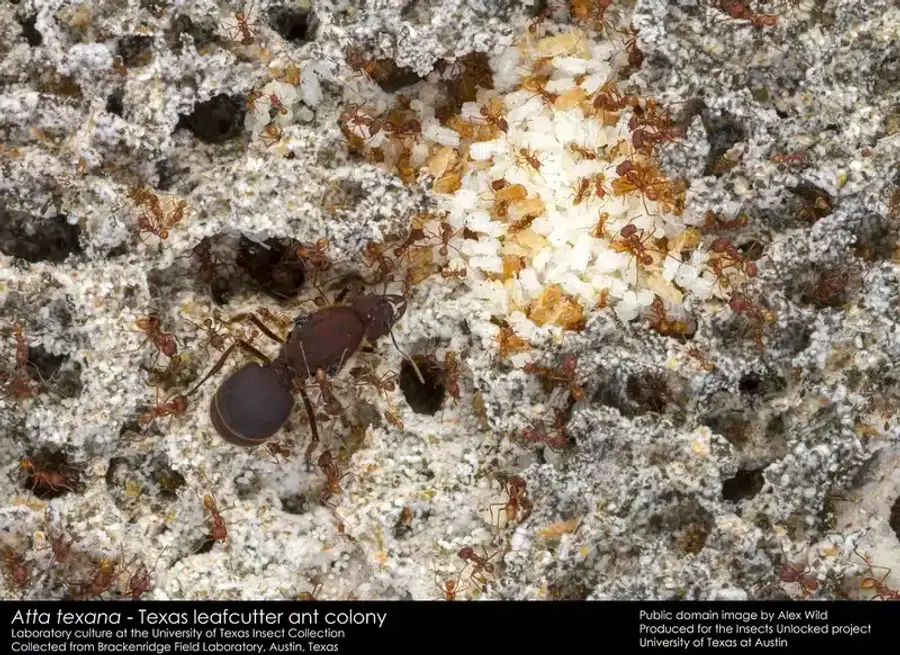
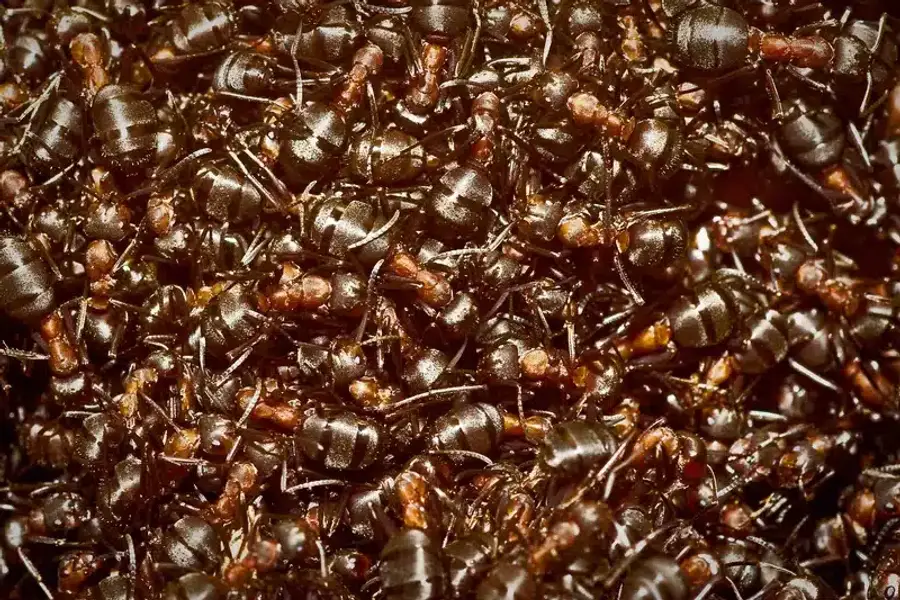
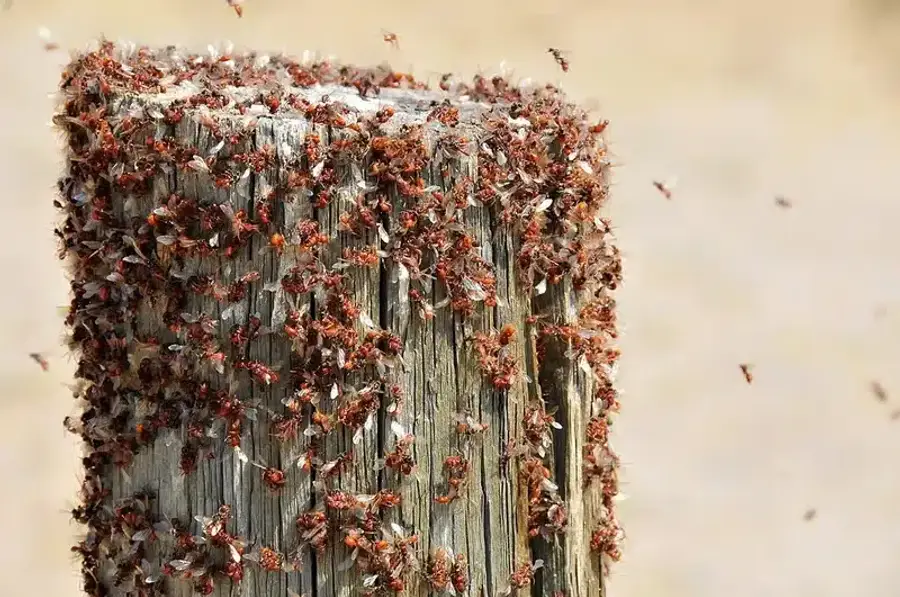
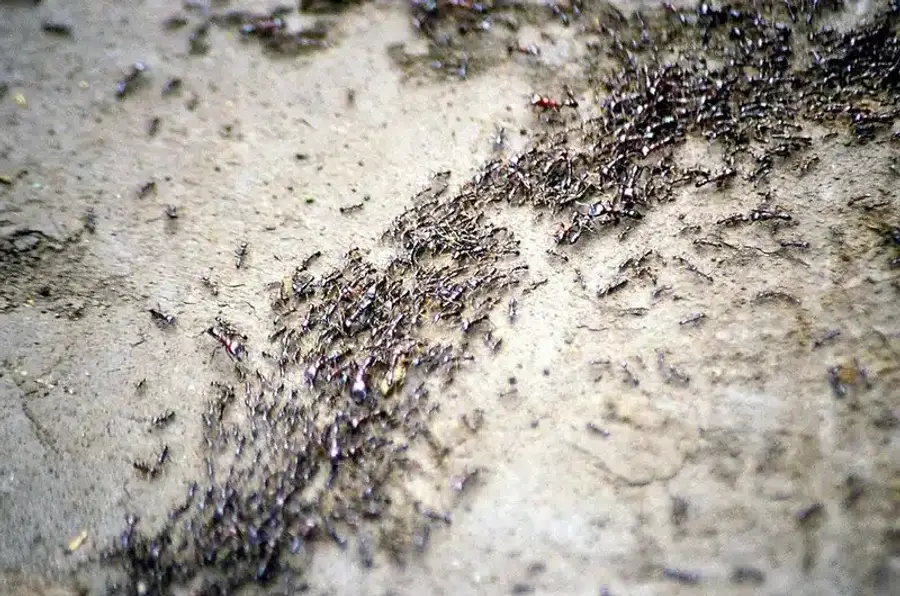
However, in a full colony, social cues often override individual sleep schedules. Isolated ants stick to their cycle, but within the colony, workers rest in staggered shifts so work never stops.
Ant Sleep in Common Mid-Atlantic Species
Let’s look at some common ant species in our area.
Carpenter Ants
Carpenter ants are mainly nocturnal foragers. They enter a deep resting phase in wood galleries during the day. When night falls, they come out to forage for water and sugar. Spot their trails around dusk and learn more in our Short Guide To Carpenter Ants.
Pavement Ants
Pavement ants forage at twilight and through the night, nesting in cracks under pavement. Their rest period is mostly under stones and soil, where they take short naps throughout the day. The majority of ant workers roam in cool evenings, while the rest slumber underground.
Odorous House Ants
Odorous house ants are partly diurnal, foraging in kitchens in daylight. By late night they return to nest cavities, entering restful sleep until morning. For tips on blocking these invaders, see How to Prevent Ants in Virginia.
Within a colony, ants may take shifts resting while others patrol.
How Ant Sleep Affects Pest Control
Understanding ants’ sleep helps you time treatments. Since ants never all sleep, there’s always someone awake to dodge traps.
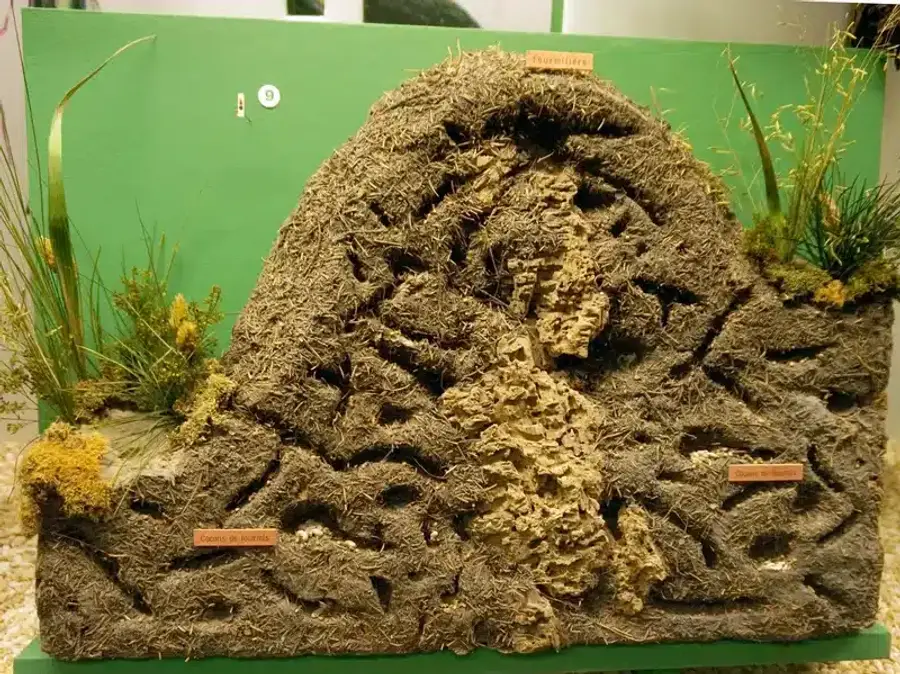
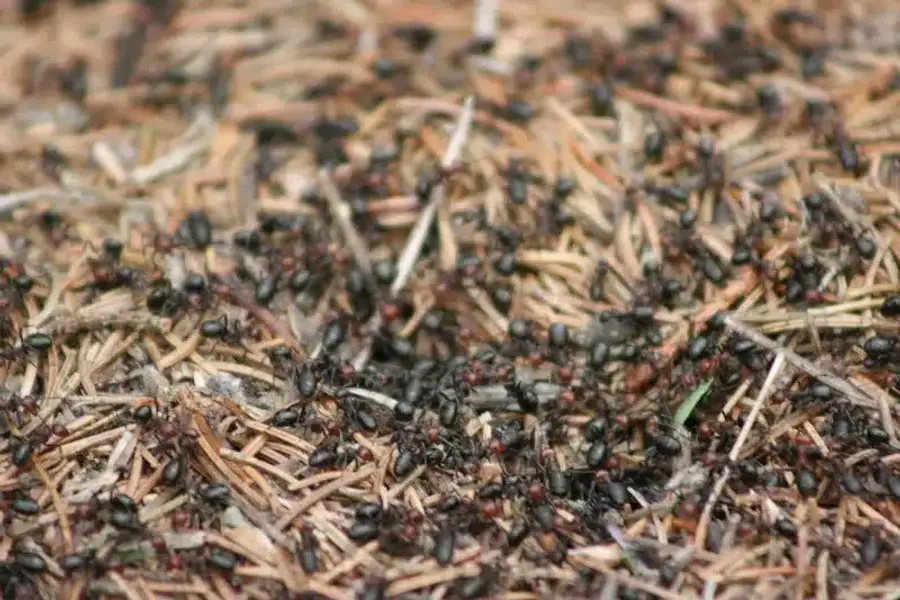
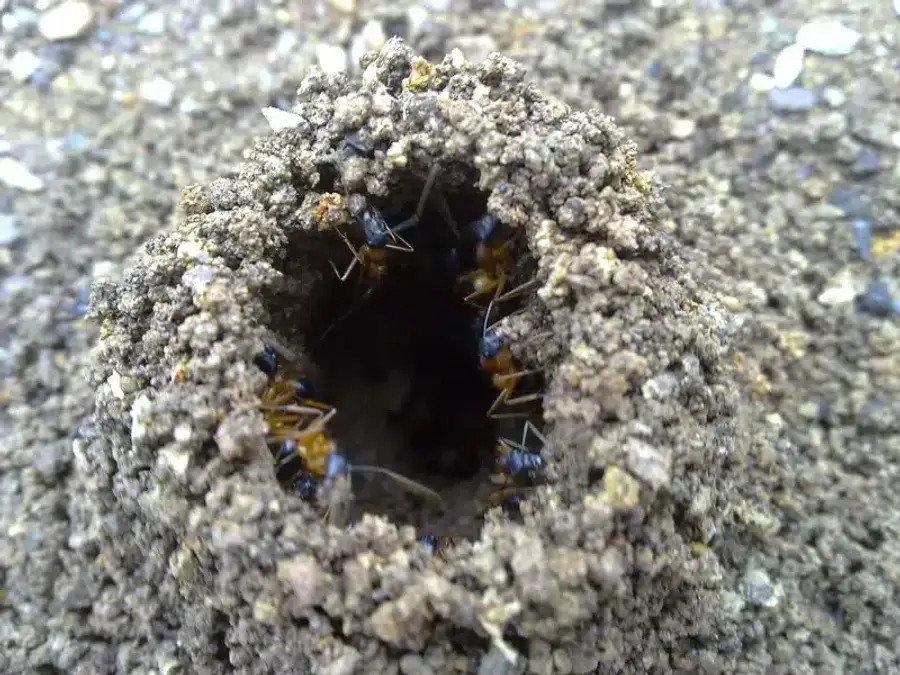
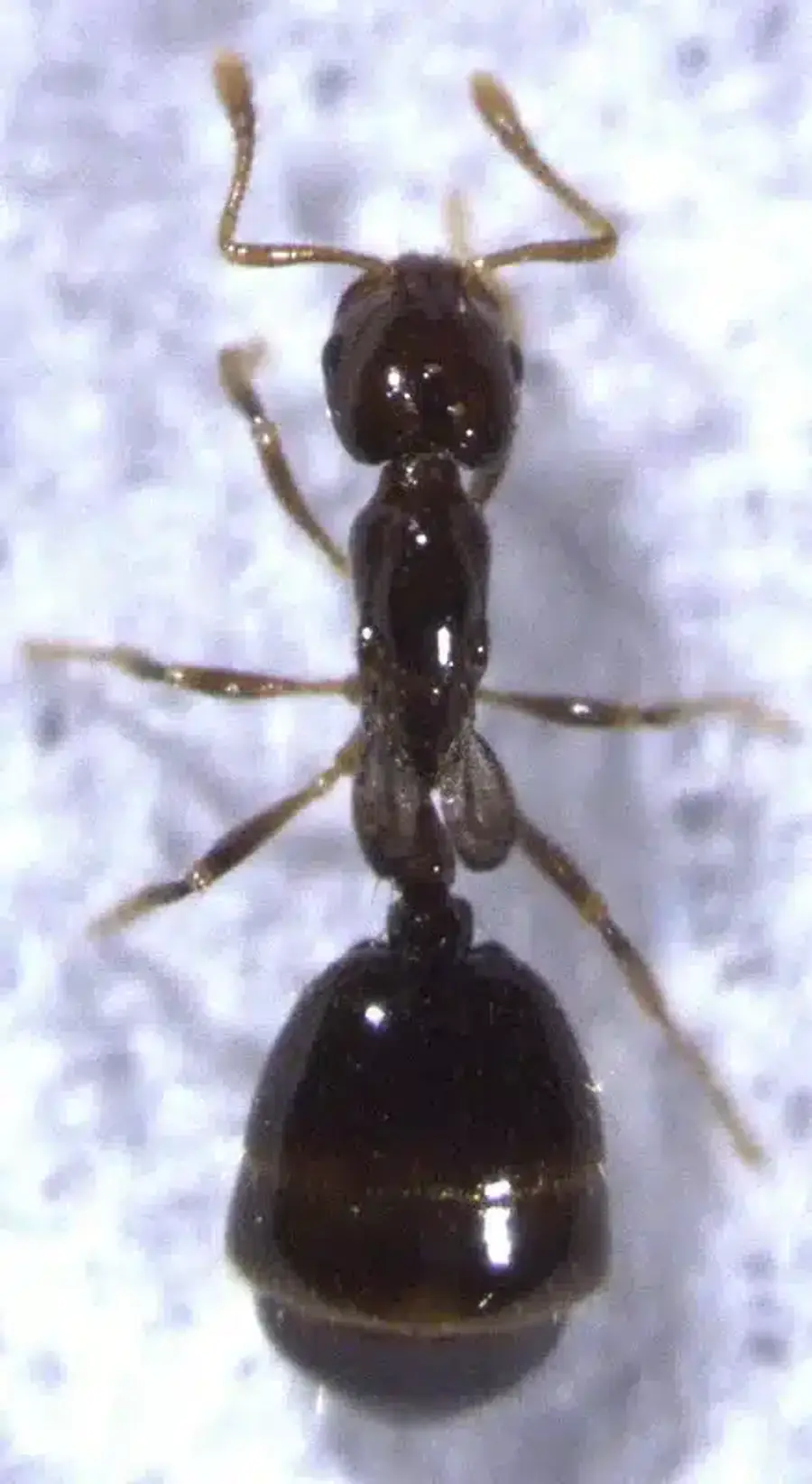
Our approach uses non-repellent insecticides that carry control agents deep into colonies. All products we use are EPA approved and passed by our internal research team. We’ve removed nine harsh chemicals, choosing options we would feel comfortable using in our own homes.
Our licensed technicians maintain your barrier year-round so you can rest easier.
Frequently Asked Questions
How long does an ant sleep?
+
When you ask "long do ants sleep", know that a worker logs about 4 hours and 48 minutes per 24-hour period in dozens of short bouts.
Why should you not squish ants?
+
Squishing an ant releases alarm pheromones—ants communicate this signal to call more workers, making an infestation worse.
What do ants do at night?
+
Nocturnal ants leave the nest to forage for food, scout new areas, or guard entrances. Fire ant and carpenter ants are most active after dusk.
How do you know if an ant is sleeping?
+
Sleeping ants hold very still, with antenna folded and mandibles relaxed. They don't react to light touch, showing a higher arousal threshold.
Do ants hibernate or remain restful in winter?
+
Ants hibernate or enter hibernation (diapause) to wait out the winter. They enter a state of low activity deep inside nests until spring.
How many naps does a worker ant take per 24-hour period?
+
Research conducted in 2009 showed the average worker ant takes approximately 250 naps per 24-hour day, each lasting just over a minute.
Can ants recover lost sleep?
+
If you disturb a resting ant, it may sleep longer later. Insects show sleep rebound like humans to catch up on missed rest. Call 703-683-2000 or email info@bettertermite.com with questions or for an estimate today!
With five years of hands-on experience in the pest control industry, George Schulz is a registered technician with the Virginia Pest Management Association and a proud third-generation professional in a family business that's been protecting homes for over 57 years. He manages and trains a team of service pros while also leading internal research efforts—recently spearheading a deep-dive review of thousands of documents on pest control materials to hand-pick the most kid and pet friendly, most effective solutions tailored specifically for homes in the DC metro area.
